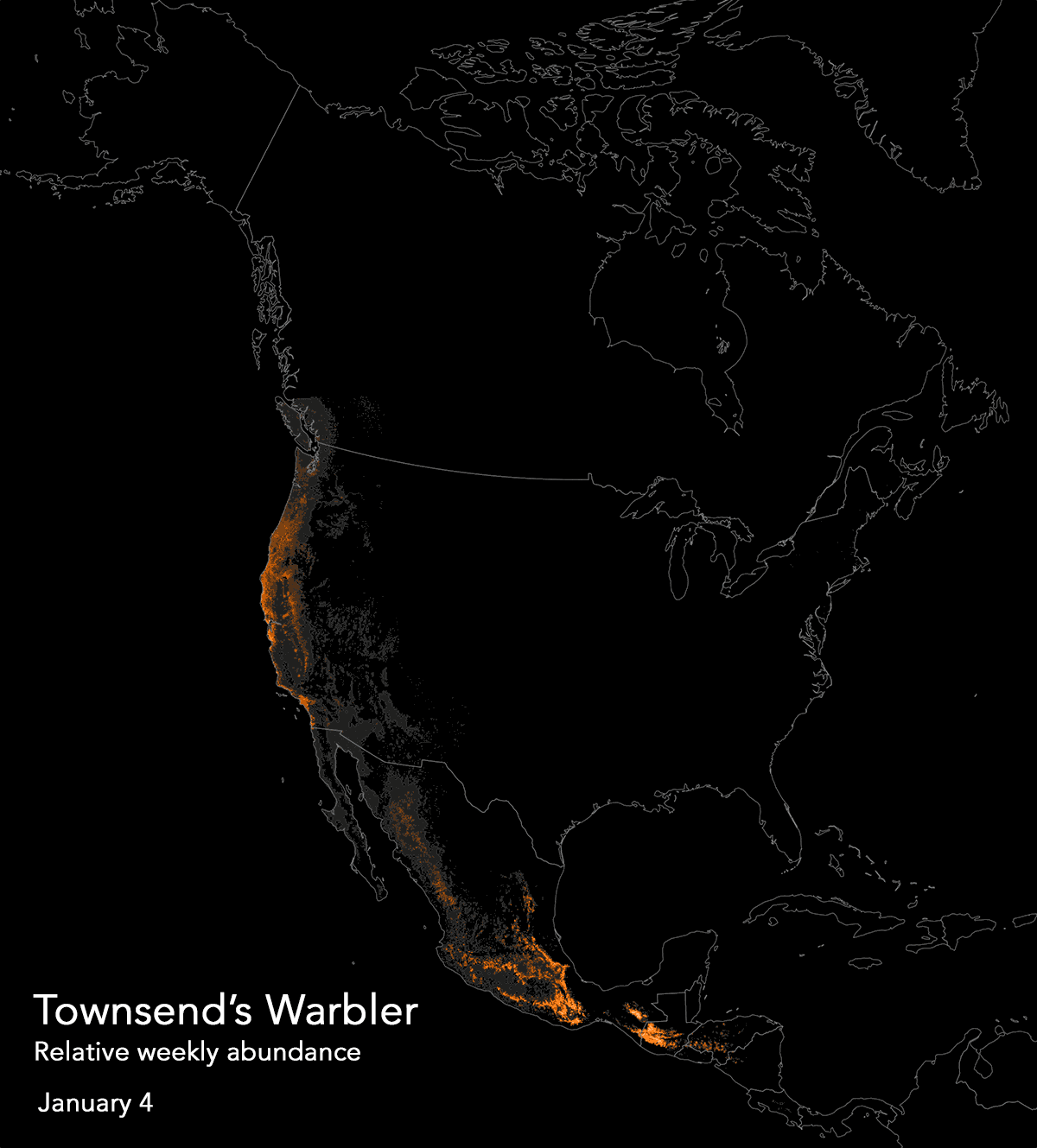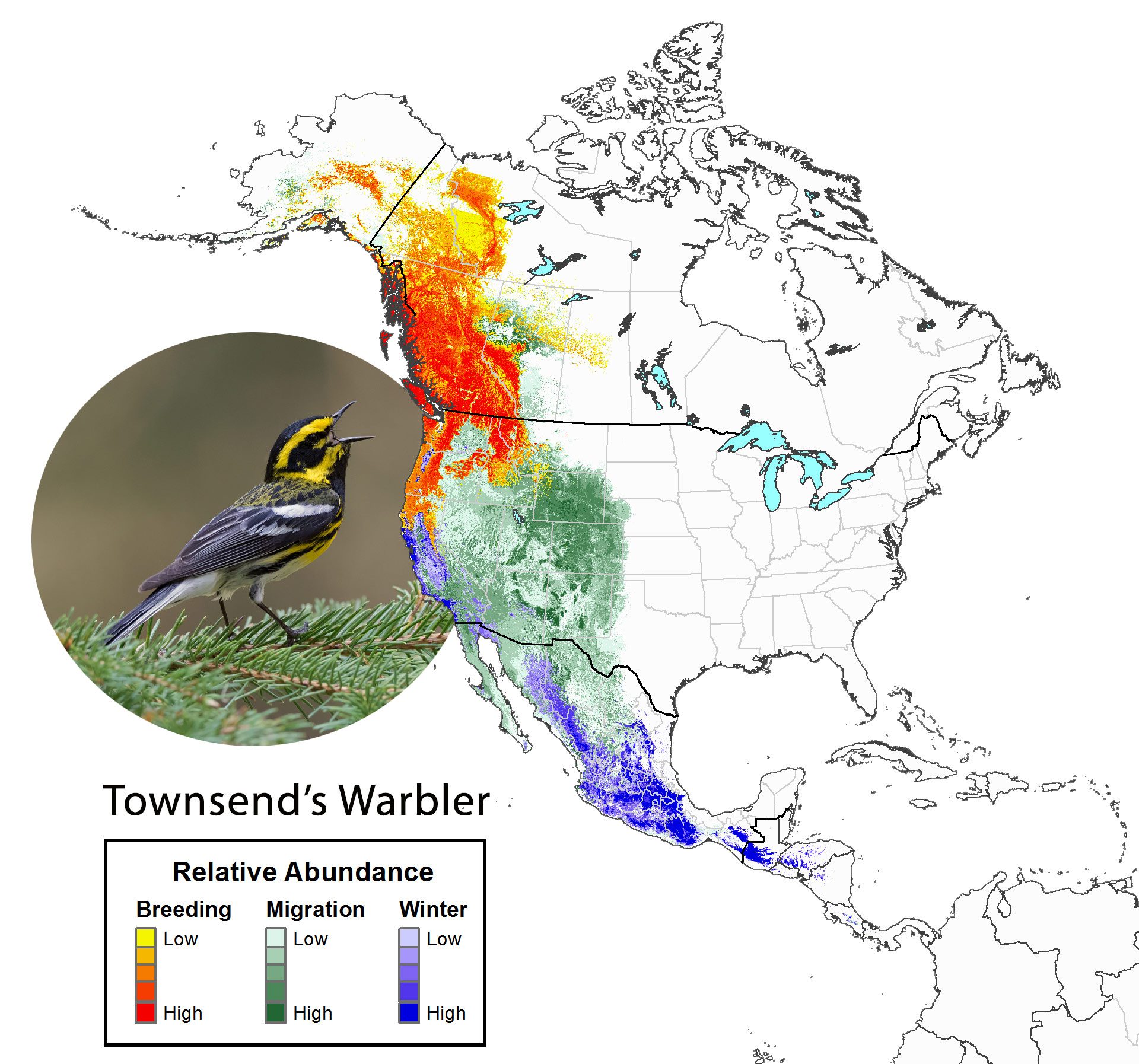Townsend’s Warbler


About the Maps
The animated map shows the Townsend’s Warbler’s predicted distribution and relative abundance across all 52 weeks of the year. The animation illustrates the migratory movements of each species as its populations travel across North America. The brighter the color, the higher the expected count of the species on a standardized eBird count.
The data used to generate this animation were produced using a statistical model to predict the relative abundance of the population at specific times and locations by relating observations of birds from eBird to local environmental features derived from NASA remote sensing data. Please note that because these maps represent models of predicted abundance, they are intended to illustrate broad patterns of connectivity across regions and are not intended to accurately depict local distributions in any given week. As more and more eBird data become available, the accuracy of these predictive models will improve.
The lower map represents the average predicted relative abundance within the breeding season (red scale), in winter (blue scale), and during fall and spring migration (combined: green scale). These maps are the best representation we have of the total year-round distribution and abundance for migratory species, illustrating connections between regions and major habitats.
About Townsend’s Warbler Abundance and Distribution
Townsend’s Warbler is part of a suite of species that connect the tall coniferous forests of the Pacific Northwest with pine-oak and highland forests of Mexico and northern Central America. Wintering Townsend’s Warblers often join large, roving mixed-species flocks with other migratory and resident warblers. A second population, thought to originate in the island archipelagos of British Columbia and southeastern Alaska, winters along the Pacific Coast of California. A close look at the weekly abundance maps reveals that spring migrants move north through the southwestern deserts and along the Pacific Coast, whereas fall migrants occur farther east in the Rocky Mountains—a “looped migration” pattern seen in many species. Townsend’s Warbler populations have been stable overall since 1970.
More about Townsend’s Warbler at All About Birds.
